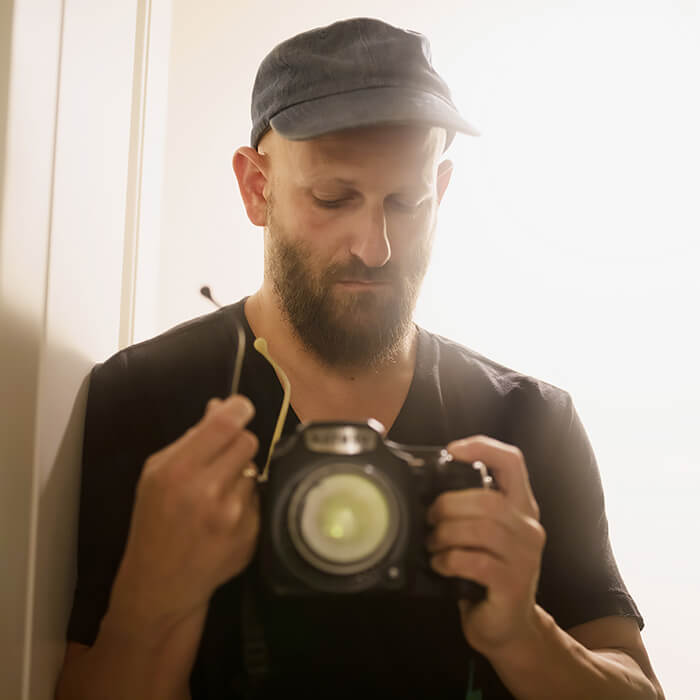Gregory Halpern (b. 1977 in Buffalo, NY, USA) is the fourth laureate of
Immersion, a French-American Photography Commission. Launched in 2014
by the Fondation d'entreprise Hermès, Immersion celebrates the work of contemporary
photographers through residencies, exhibitions and publications.
As part of a three-year partnership with the
Fondation Henri Cartier-Bresson
in Paris and the
San Francisco Museum of Modern Art (SFMOMA),
Immersion invites each laureate to present a solo exhibition at the outcome of his or her residency, at both of these institutions.
The exhibitions are accompanied by a bilingual photo book in English and French.
From September 8 to October 18, 2020 at the Fondation Henri Cartier-Bresson, and in 2022 at SFMOMA, Gregory Halpern's exhibition Soleil cou coupé (Let the Sun Beheaded Be)
presents an ensemble of photographs taken during his 2019 residency in Guadeloupe. Guided by his personal curiosity, the island's rich diversity and its vernacular culture, Halpern's images embrace and develop the Caribbean Surrealism of Martinican writer Aimé Césaire (1913-2008), from whose work the exhibition's title is borrowed.
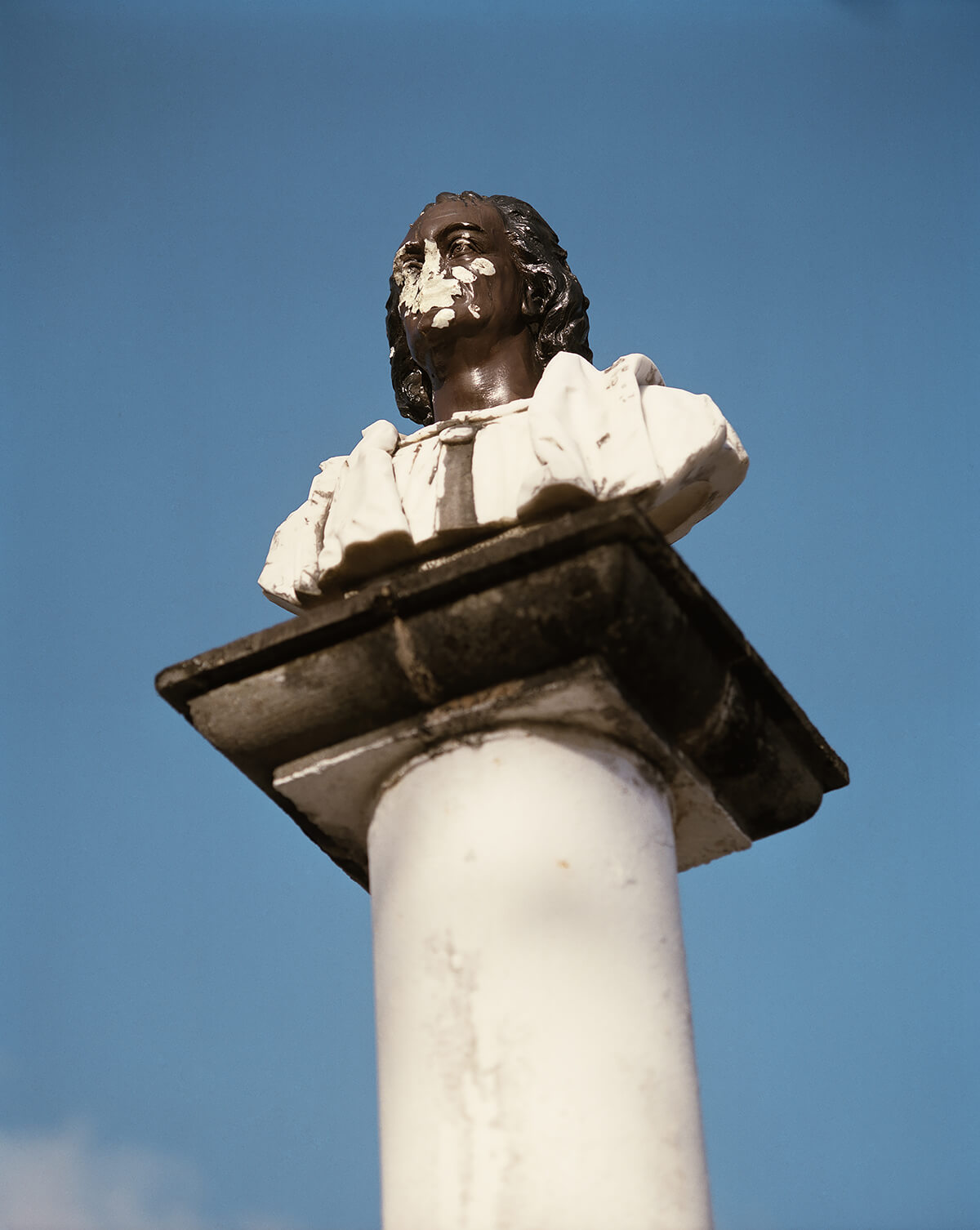
© Gregory Halpern, Untitled, from the series Let the Sun Beheaded Be, 2019
American photographer
Gregory Halpern - laureate of the 2018 edition of Immersion, a French-American Photography Commission - chose Guadeloupe as the destination for his residency, guided by the island's history and the poetry of Aimé Césaire (1913-2008). Halpern set out to discover the island's people, fauna and flora but was fascinated, too, by the burden of history and its traces in everyday surroundings. The exhibition Soleil cou coupé (Let the Sun Beheaded Be) is accompanied by Halpern's monograph of the same name, published by
Aperture. The book includes a preface by Clément Chéroux,* former Senior Curator of Photography at SFMOMA and the photographer's mentor throughout his residency.
* In February 2020, Clément Chéroux was appointed The Joel and Anne Ehrenkranz Chief Curator of Photography at
MoMA, New York, with effect from July 2020.
When asked about the reasons he chose Guadeloupe (French West Indies)
for his project, Gregory Halpern replies:
I think I knew
I would find a certain form of surrealism there. Indeed,
there is something in his photographs of the Caribbean
surrealism incarnated by the writer Aimé Césaire.
In three successive journeys-the longest of which,
in the spring of 2019, lasted two months-Halpern traveled to Guadeloupe as part of Immersion, a French-
American Photography Commission of the Fondation d'entreprise Hermès. Every day, from late morning until
sunset, he set out to photograph what he saw. With the
perseverance of a gold digger sifting through river sand
in the hope of finding a nugget, he scoured the island,
most often on foot. What brought Halpern's process
close to that of surrealist wandering was, first of all,
the way he set out to photograph. As he had already
done elsewhere, he laid himself open to receiving what
the place had to give. For André Breton (1896-1966),
surrealist writers were 'modest recording instruments,'
or mere 'collector[s] of indirect loans.' Halpern was
likewise hypersensitive, photographing in a state of
maximum receptivity. He waited for surprises, alert to
the bubbling source, watching out for epiphanies-those
small instantaneous miracles that can arise at each street
corner. His photographs often recall those of Éli Lotar in
Europe during the late 1920s and the following decade:
pigs' trotters carefully lined up on the pavement, an
odd section of a wall, a sea urchin in a hand-although
created outside the Surrealist group, these images enter
fully into its aesthetic. In Halpern's photographs, there is
the same 'uncanny strangeness,' 'circumstantial magic,'
or 'convulsive beauty'-to use some of Breton's favorite
phrases-with the difference that the Parisian grisaille is
replaced by the radiance of the tropics. [...]
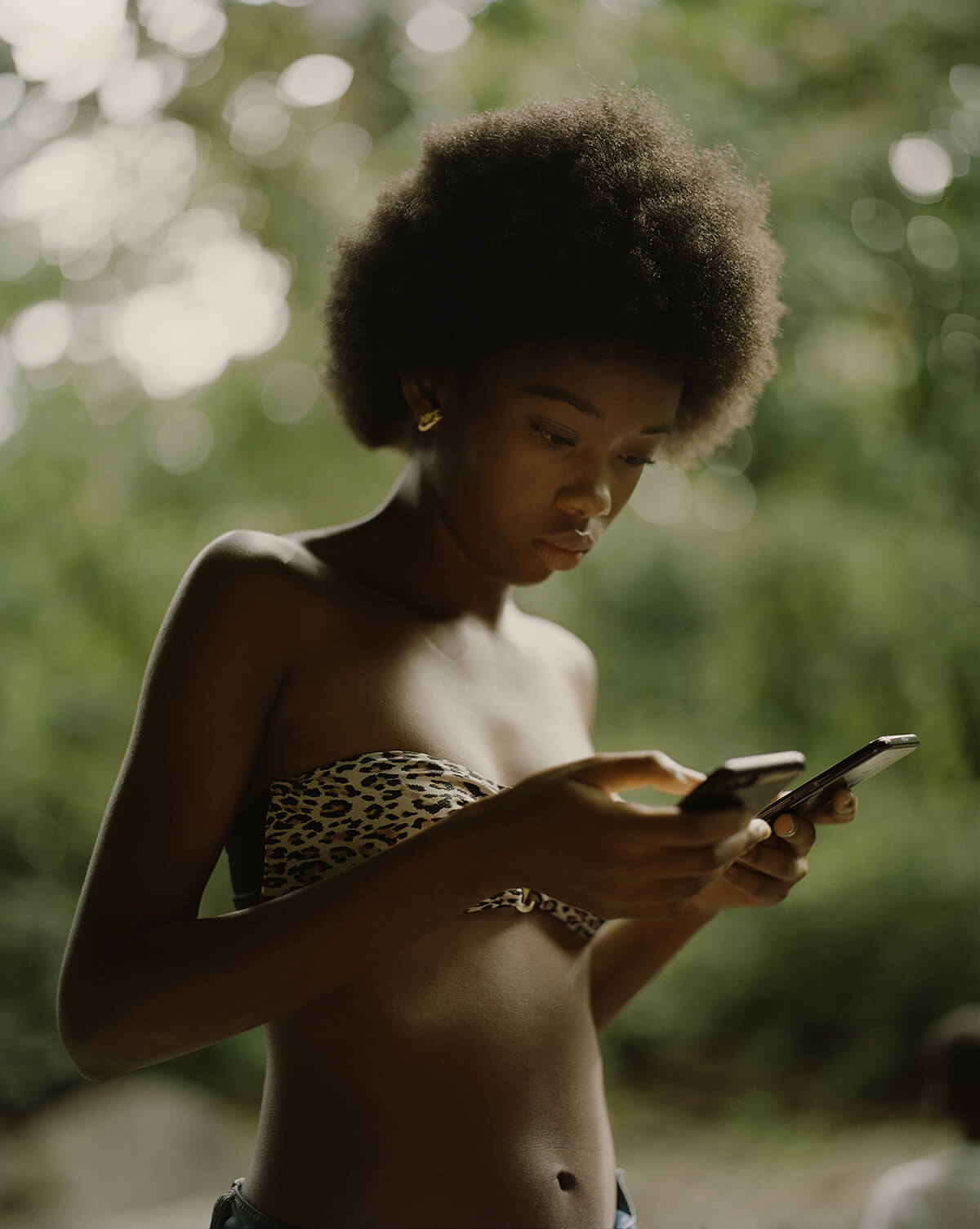
© Gregory Halpern, Untitled, from the series Let the Sun Beheaded Be, 2019
Halpern explains,
slavery memorials are
everywhere, so the weight of that history is much more
perceptible than in the United States. On Grande Anse
beach, near Deshaies, he met and photographed a young
man with a shoulder tattoo of the Decree of the National
Convention abolishing slavery. In the city of Les Abymes,
he documented a commemorative structure consisting of
a sort of doorway opening onto a vertical concrete slab,
thin as a blade and covered by a metallic black-and-white
photograph of the setting sun. In Capesterre-Belle-Eau,
at the top of a tall Tuscan column, he photographed a
bust with a plaque that reads 'Christ Columb'- referring
to Christopher Columbus. The monument has been
vandalized: the inscriptions crossed out in spray paint, the
face in Carrara marble-known for its whiteness-covered
in black paint and disfigured with a chisel. Left in this state,
the monument offers a combined representation of both
colonization and slavery, a startling, abridged version of the
history of violence in this part of the world.
Before leaving for Guadeloupe, Halpern did considerable
research, knowing that he would be challenged by this
complicated history. But on his arrival, the exuberance
of nature came as a surprise: the omnipresent sea,
the rocky peaks in which birds nested, the vegetation
cropping up amid urban interstices, the innumerable
species of multicolored flora, the shimmering light.
Guadeloupe is often described as 'paradise regained,'
and it is easy for a photographer to merely reproduce
its postcard iconography. This is precisely what Halpern
sought to avoid, counterbalancing his representations of
Guadeloupean nature with elements that recall the place's
terrible history. [...]
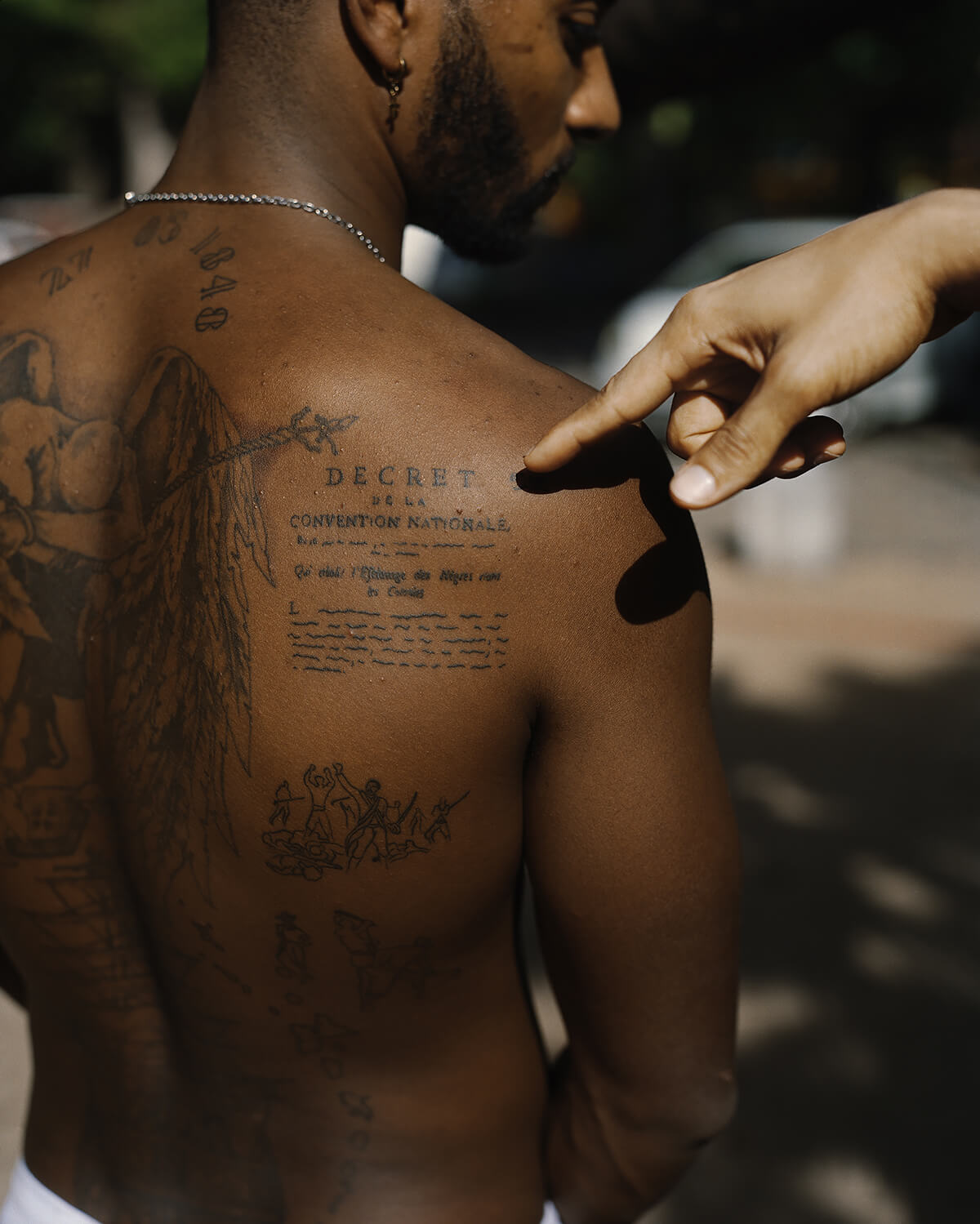
© Gregory Halpern, Untitled, from the series Let the Sun Beheaded Be, 2019
Halpern's wanderings in the archipelago provided
opportunity for numerous encounters with its residents.
In broken French, he explained his plan in a few words:
a series of photographs, an exhibition, a book, where the
common denominator was the place they inhabit. After
a conversation, he might suggest a very simple pose,
photographing them sometimes from the back or
in three-quarter view, but most often from the front,
eye to eye. [...]
Women, men, young and old, Black, mixed-race, white-
there is great diversity in Halpern's Guadeloupean
photographs, representative of the people who live
there. These images allow a glimpse of what forms their
communality-a combination of pride and vulnerability.
Halpern loves this duality. [...]
Because history has made the Caribbean into a labora-
tory for hybridization, for Halpern, the Caribbean
is a particularly appropriate observation post for
understanding a world that is increasingly subject to
migration. In this sense, a photographer born in Buffalo,
New York-to which his family emigrated from Hungary
in the 1920s to escape anti-Semitism- documenting
a land that is geographically part of the Americas but
under France's jurisdiction, together with its colonial past,
was bound to produce a fascinating recombining of the
cultures of the world [...]
Halpern's Guadeloupean photographs in many ways
recall those that Walker Evans took in Cuba, Alabama,
and Florida. Both artists photographed a particular
geographical region-the Caribbean, the American
South-profoundly marked by slavery, and they
both chose subjects that, by their vernacular status,
metaphorically reflect this history. At no time while
in Guadeloupe did Halpern experience the need to
photograph everything he saw. To use a journalistic
expression, he never saw his project as one of covering
his subject. This might describe the approach of
photographers working for magazines or tourist guides.
Instead, Halpern was guided by his curiosity, his intuition,
his desires. He photographed the traces of an eminently
turbulent history; he strove to capture the spirit of these
places and the people who inhabit them; he detected
an animal presence, and meaning in the vernacular.
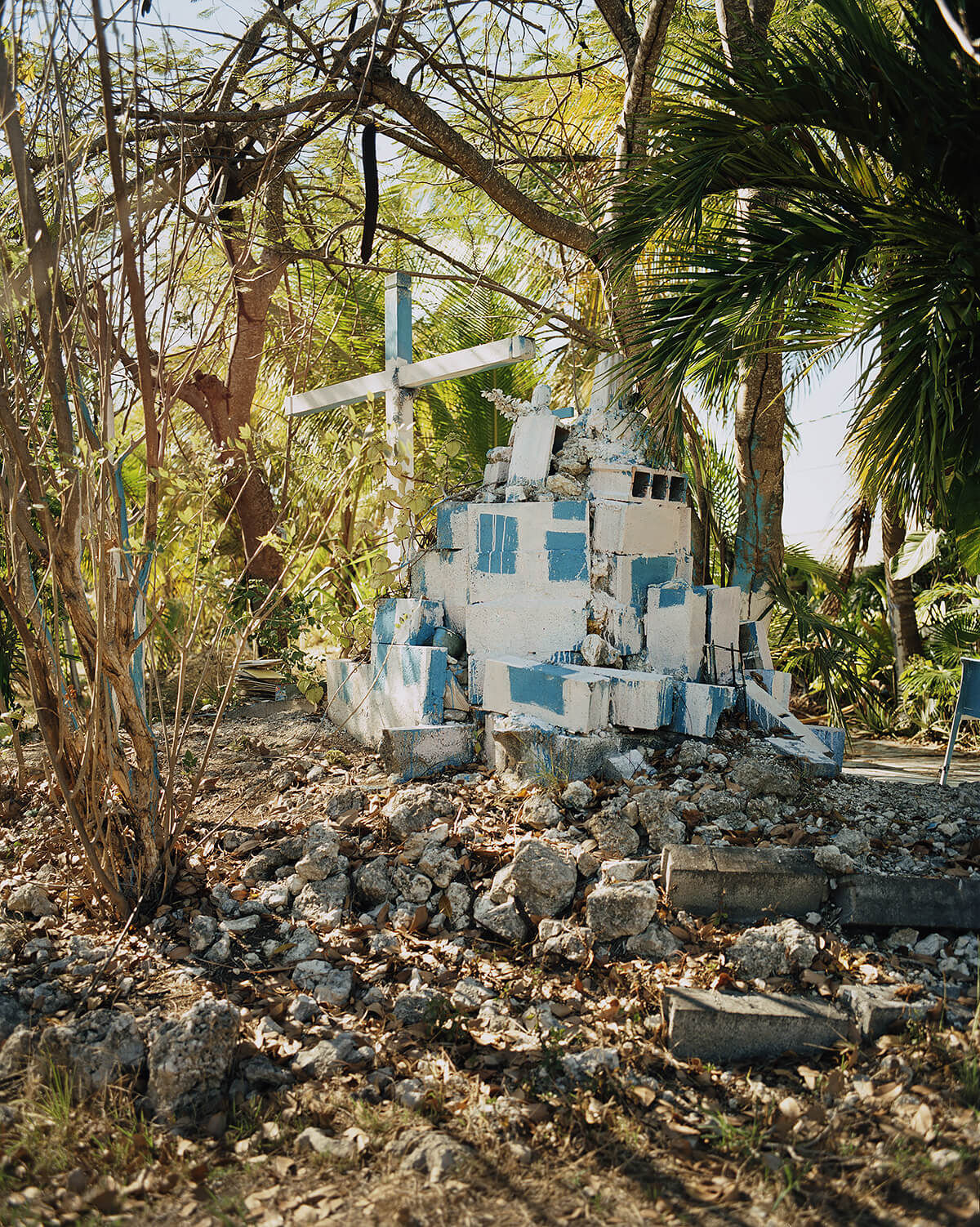
© Gregory Halpern, Untitled, from the series Let the Sun Beheaded Be, 2019
I'm fascinated by the way Guadeloupe sits in-between the
Americas and Europe, both culturally and geographically.
It has an absorbing and complicated history, as a former
colony and now as an overseas region of France itself,
and I'm interested in the kind of beauty that erupts in
places where cultures and histories coexist, in an often
contradictory manner.
What did you know about the history of the island and
how it might inspire your work?
I didn't know that much before going there. I had been
there as a child, but briefly and as a tourist. So, in
preparing to go there I read about the history of the
island, the history of the slave trade and colonialism,
and I read Soleil cou coupé, an amazing book of
poems by Martinican writer Aimé Césaire. The book is
dark, beautiful and surreal, full of smells and heat and
sunlight. It mixes a sense of magic with an explosive and
revolutionary anger, which I found inspiring and made me
want to photograph very much before getting there.
How did you meet the people you photographed?
And how did you earn their trust despite the language
barrier?
My process of wandering when I photograph is pretty
unpredictable, which I love. I often have an idea or a thing
I want to photograph, which gets me out the door in the
morning, and this is great because it gets me started,
but I often get sidetracked on the way because I find
something else or I meet someone I want to photograph.
Sometimes someone gets in the car with me, sometimes
I get in theirs. I try to be fully present, which can be a
challenging thing, and I'll often turn my phone off and go
alone, to sort of maximize my receptivity. But, yes, the
language barrier was a challenge because my French
is not great and few people are fluent in English in
Guadeloupe. But, despite that, occasionally I could still
make a strong connection and it's always an amazing
thing when that happens, despite the odds. It's sort of
reaffirming about human nature when that can happen-
a connection can be made across lines of race, culture
and language. Sometimes I would hire a translator to go
with me, but often I was alone because, with portraiture,
I think, people don't like much of an audience.
How did you structure your work while you were there?
I went to the island three times, the longest visit being
two months, when I went with my wife and daughters.
The other two trips were shorter and alone. When I go
out, it's always a mix of planning and allowing myself to
be surprised by what I encounter. For the pictures to work
in the end, there has to be something in them that defies
expectation, something that surprises or unsettles or nags
at you. Something that makes you think, not something
that simply reaffirms what you already know or feel.
Did your initial project evolve over the course of the
residency?
Well, I tend to go in with a vague sense, a feeling, and
some plans. It all changes as I go, but that's sort of the
plan, if you will. I was nervous going there, thinking:
What will I do there? And: How can I photograph in this
place where I am such an outsider? I didn't go in with a
planned, unique concept that somehow incorporated the
history of Guadeloupe and addressed my status as an
outsider. I didn't know how to do it. But my wife gave me
great advice-she told me, essentially, to just make my
work, to photograph the way I would anywhere. It was
so helpful and I think it was the right thing to do.
How did you work with Clément Chéroux, who
mentored you throughout the residency?
I worked very closely with Clément in every stage of the
process. I even shared contact sheets with him as soon as
I had come back from Guadeloupe, which is very unusual.
I tend to work in solitude and am very private with my
contact sheets until I've had a chance to edit, and then
show someone only the best images-we photographers
tend to hide our out-takes like dirty underwear! But with
Clément I completely trusted him, and felt so supported
by him. We met in New York frequently to edit together,
sequence the book and talk about the exhibition and the
ideas behind the pictures. Making art is often such a
lonely process, full of feelings of doubt, so it was amazing
to have someone like him as an ally along the way. It will
be hard to go back to working alone again after this!
What would you like to share of this experience with
the future readers of the book accompanying the
exhibition (in Paris, then in San Francisco)?
I'd like readers of the work to feel comfortable
interpreting the pictures for themselves. And if they
feel uncomfortable with any of the pictures, to simply
investigate that feeling and try to determine what that
sense of discomfort means for them.
Interview by Marylène Malbert (November 2019)
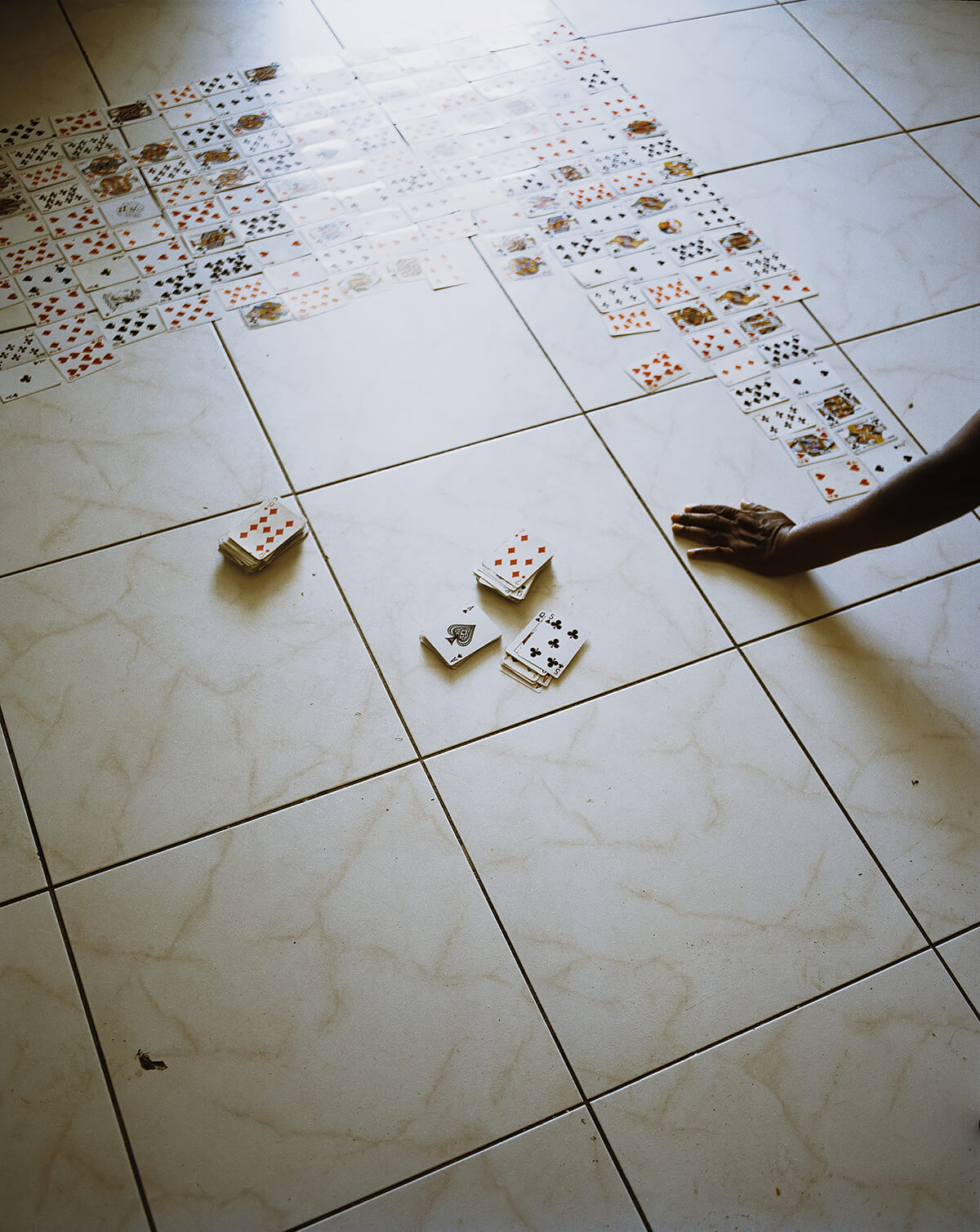
© Gregory Halpern, Untitled, from the series Let the Sun Beheaded Be, 2019
Born in 1977, in Buffalo (New York, USA),
Gregory Halpern read history and literature at Harvard, and obtained a masters' degree at the California College of the Arts. He was the recipient of a Guggenheim Foundation grant in 2014. In 2016, his book ZZYZX (Mack Books, 2016) was named the Paris Photo - Aperture Foundation PhotoBook of the Year. Gregory Halpern teaches photography at Rochester Institute of Technology in New York State. He has published several photobooks, including Confederate Moons (TBW Books, 2018), A (J&L Books, 2011), and Harvard Works Because We Do (Quantuck Lane, 2003). He has collaborated with American photographer
Ahndraya Parlato on the publication East of the Sun, West of the Moon (Études, 2014), and co-edited The Photographer's Playbook: Over 250 Assignments and Ideas (Aperture, 2014) with American photographer, publisher and educator Jason Fulford.
Clément Chéroux
Mentor of the fourth edition of Immersion
& curator of the exhibition Let the Sun Beheaded Be
Clément Chéroux is a photographic historian. He holds a doctorate in art history and joined the Musée National d'Art Moderne (Centre Pompidou Paris) as a photography curator in 2007, becoming Chief Curator from 2013 to 2016. He was appointed Senior Curator of Photography at the San Francisco Museum of Modern Art (SFMOMA) in January 2017, and The Joel and Anne Ehrenkranz Chief Curator of Photography at MoMA, New York, in February 2020 (effective from July 2020). He has curated numerous exhibitions including Memory
of the camps: photographs from the Nazi concentration and extermination camps, 1933-1999 (2001), The Subversion of Images: Surrealism, Photography and Film (2009), Shoot! Existential Photography (2010), Henri Cartier-Bresson (2014), Paparazzi! Photographers, stars, artists (2014), Walker Evans (2017) and The Train: RFK's Last Journey (2018). He has authored and edited some forty books on photography and the history of the medium.
Agnès Sire
Artistic Director, Fondation Henri Cartier-Bresson
& co-curator of the exhibition Soleil cou coupé
Agnès Sire trained in philosophy and quickly specialized in the aesthetics of photography. After a spell working with Bénédicte Pesle at Galerie Alexandre Iolas, she spent twenty years with Magnum Photos, as Artistic Director and co-author of numerous group publications and exhibitions. She showed a particular interest in Chilean-born Magnum photographer Sergio Larrain, with whom she organised and published five major exhibitions and books. Since 2002, she has worked with Martine Franck to develop and launch the Fondation Henri Cartier-Bresson in Paris. She was made Director of the Foundation, and curated the majority of its exhibitions until 2018, since which time she has shared the directorship of the museum's new headquarters with François Hebel, while continuing to serve as Artistic Director. She has published and curated some fifty photobooks and exhibitions.
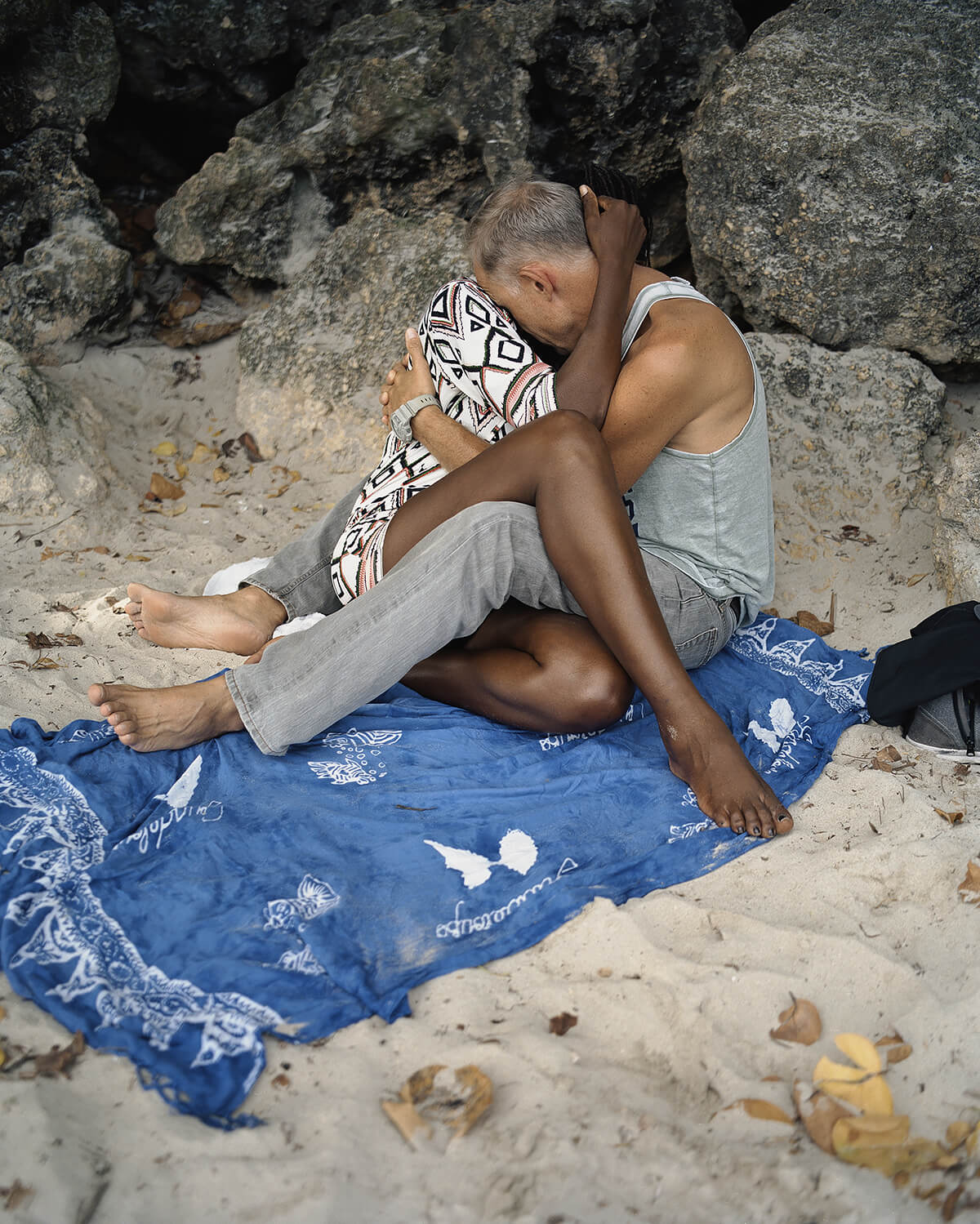
© Gregory Halpern, Untitled, from the series Let the Sun Beheaded Be, 2019
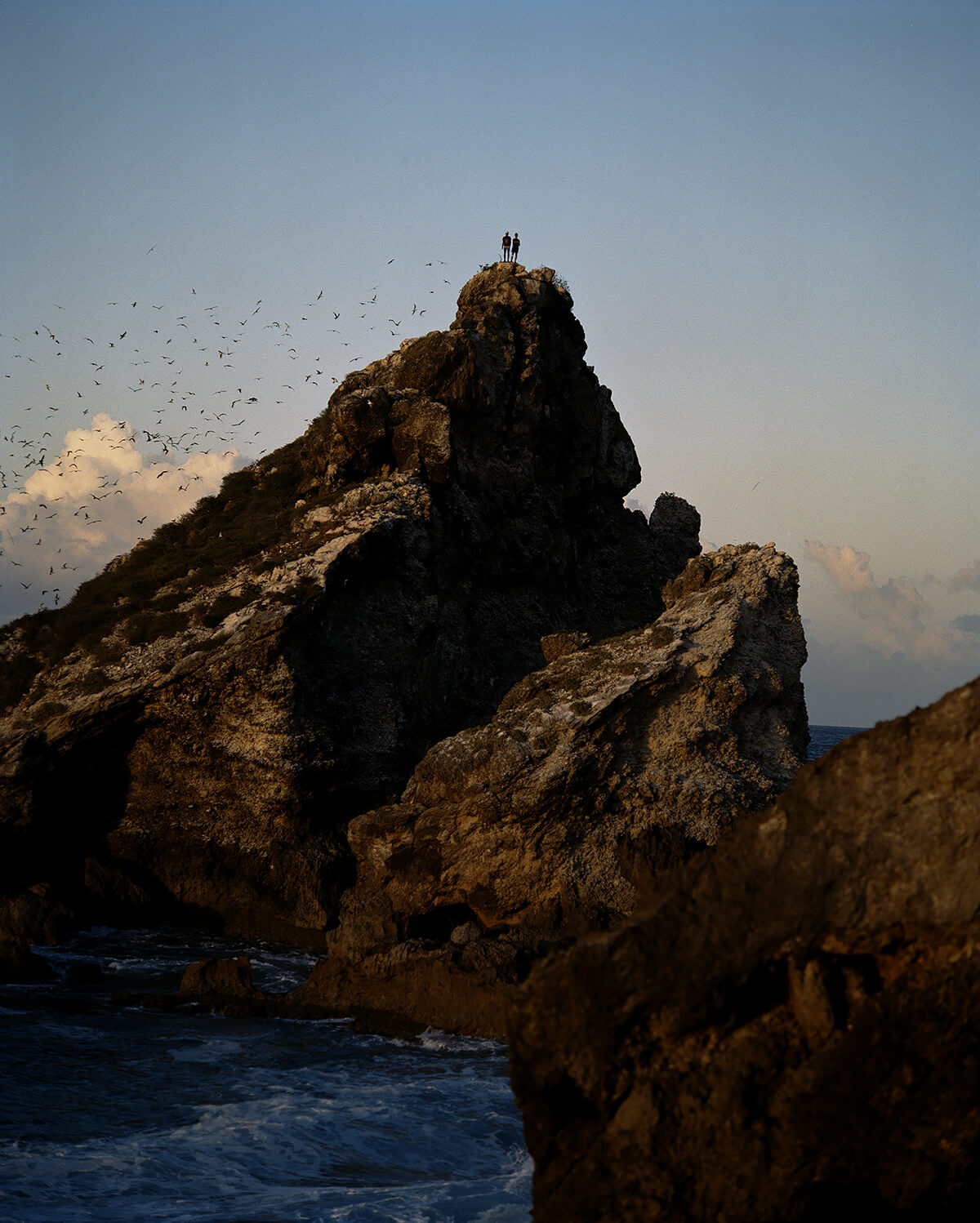
© Gregory Halpern, Untitled, from the series Let the Sun Beheaded Be, 2019
